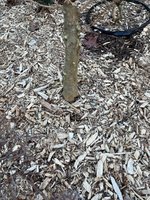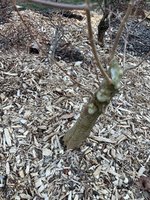I would like to reduce the trunk of this trident maple in the late spring. I can't seem to wrap my head around these trunk chops and looking for guidance before I destroy another tree.
I believe my confusion is on the relationship between angle of cut, die back and refining the cut at a later date. I plan to chop where there are already existing branches. Here are the questions:
1 - When I chop the trunk, how close to the node do I cut? Do I leave a protruding nub?
2 - Do I round the carve initially?
3 - When chopping on an angle, I've read to cut at a 45 degree angle. Is that correct?
4 - What happens if I cut the angle too steep? (I cut one pretty steep, but it has branches all around).
5 - Finally, what does it mean to clean up the cut in the following years?
Sorry for the barrage of questions.
I believe my confusion is on the relationship between angle of cut, die back and refining the cut at a later date. I plan to chop where there are already existing branches. Here are the questions:
1 - When I chop the trunk, how close to the node do I cut? Do I leave a protruding nub?
2 - Do I round the carve initially?
3 - When chopping on an angle, I've read to cut at a 45 degree angle. Is that correct?
4 - What happens if I cut the angle too steep? (I cut one pretty steep, but it has branches all around).
5 - Finally, what does it mean to clean up the cut in the following years?
Sorry for the barrage of questions.



